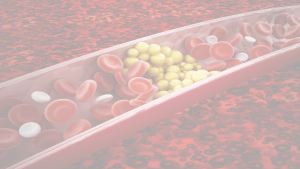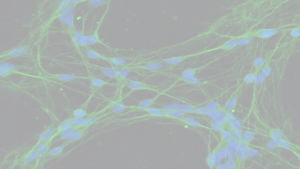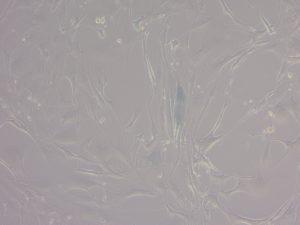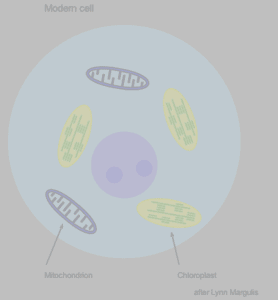Unfortunately, waiting lists for organ transplant are increasing every year and not all patients are able to receive one of these organs. Besides, who doesn’t know somebody suffering from diabetes, heart disease, blindness, etc.? This patients are not included in the waiting lists but their quality of life could be greatly increased if they could benefit from a new liver, heart or corneas.
What would you think if I told you that the solution to this problem could be to produce human organs in pigs? Although it could sound like science fiction, this solution is now one step closer to reality thanks to the research article published this year by the Spanish scientist Juan Carlos Izpisúa Belmonte1.
However, this is not that easy. In the first place, we need to produce chimeras. According to Greek mythology, “Chimera” was a monstrous creature with a lion head, another goat head arising from its back, and a snake growing from the tail. that lived in Minor Asia making the people panic. But nowadays, we call chimera to an organism composed of cells from two different individuals. Chimeric animals can be produce in the lab by injecting stem cells from one species into early embryos from a different one.
Stem cells are capable of dividing for indefinite periods, producing two identical cells on each division. Furthermore, they can form any cell type in the body, so in the lab we can make them grow and transform them into different tissues. Although they are still far from being able of making a complete organ that can be used for a transplant, they can have a more suitable environment for this by injecting them into an embryo.
The first experiments were carried out in 20102 with mouse embryos that had been previously genetically modified by deleting genes that are necessary to produce the pancreas. These mice wouldn’t be able to survive. However, by injecting rat stem cells into a precise moment of embryo development, they could develop and be healthy thanks to the organs produced by rat stem cells (Figure 1).
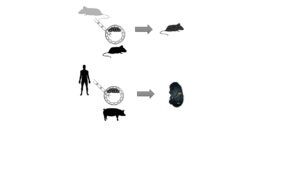
Figure 1. Experiments carried out to produce chimeras with organs from a different species.
Next step was trying to find an animal where human stem cells would be able to produce organs. Pigs are similar to us in a lot of aspects, particularly in organ size and physiology. For this reason, they were good candidates to perform this experiments at Dr. Izpisúa Belmonte’s research team. Besides, thanks to adult cells reprogramming (transforming differentiated cells back into stem cells) we can have stem cells specific from each patient only from a skin sample. These cells can be modified so they always show a green fluorescent protein. In this way, using UV light we can easily distinguish human cells (in green) from pig cells (no fluorescence). However, when the researchers introduced human stem cells into pig embryos that were transplanted into sow’s uterus and recovered 4 weeks later (Figure 1), they found that only 1 on each 100.000 cells in these pig foetuses were of human origin, so this technique is not very efficient yet. To be able to improve it, it would be necessary to know in which moment of development and in which conditions the human stem cells need to be introduced into the embryo. For this purpose, we need to have a better knowledge about the pig embryo development.
Embryo development before implantation is fascinating. After the sperm fertilizes the oocyte, this new little embryo starts dividing. During the first days of development, their cells are able of becoming any cell type or tissue. In fact, these cells can be used to obtain stem cells in the lab.
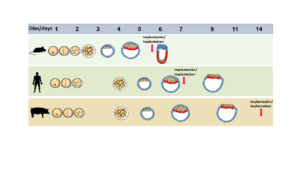
Figure 2. Early embryo development in mouse, human and pig
Until now, most studies on embryo development had been carried out on mice because they are very easy to handle (I also did my PhD with mice). However, mouse embryo development is very different to the human. On the contrary, the pig embryo is much more similar and is a sustainable model (Figure 2). That is the reason why I decided to move to a different species for my post-doctoral adventure in England. Currently, I am using pig early embryos to understand how the cells start making decisions about “what they want to be when they grow up” and which mechanisms are involved on it. To this aim we are analysing, cell by cell, all the genes that are necessary on each moment of development. This technique is known as “single-cell RNA sequencing” and it has been recently used in human, mice and monkey embryos.
The data that we will generate for the first time from pig embryos will be very useful to know which is the best moment to introduce human stem cells and in which conditions, so they can survive and become part of the future animal. In addition, as the pig the embryo grows for almost one more week before implanting (Figure 2), that will allow us to study developmental stages that are not accessible in humans, due to the fact that the human embryo is already implanted in the maternal uterus. For all these reasons, pig embryos are a very useful model to study embryonic stages that are not accessible in humans, and they could also help to improve life quality of a lot of people through the production of “humanized pigs” for organ transplant.
By Dr. Priscila Ramos Ibeas. Postdoctoral Researcher at the University of Nottingham. SRUK Midlands Constituency.
More information:
References:
- Wu, J. et al. Interspecies Chimerism with Mammalian Pluripotent Stem Cells. Cell 168, 473-486 e415 (2017).
- Kobayashi, T. et al. Generation of rat pancreas in mouse by interspecific blastocyst injection of pluripotent stem cells. Cell 142, 787-799 (2010).

